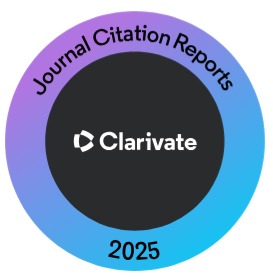A Missense variant in LAMA3 gene causes microcephaly and epidermolysis bullosa in a Pakistani family
Abstract
OBJECTIVE: To identify the disease-causing mutation in a family with autosomal recessive primary
microcephaly (MCPH).
METHODOLOGY: This cross-sectional study was the continuation of an ongoing family-based study
initiated in 2016 at the Department of Biochemistry, Quaid-e-Azam University, Islamabad. The family was
selected randomly and recruited from Sahiwal and has three members with MCPH. DNA was isolated
from blood samples and the genome-wide scan was performed to map homozygous regions. Whole
exome sequencing (WES) was performed to identify the plausible gene variant.
RESULTS: Whole genome data analysis identified multiple homozygous regions, but none of these
contain known MCPH genes. Whole exome sequencing (WES) data identified six potentially pathogenic
variants but only the Laminin subunit alpha-3 (LAMA3) (c.5260C/T) variant segregates in the family and
is also present within the genomic region mapped on chromosome 18. The reevaluation of affected
members of the family revealed the presence of blisters on their hands and feet indicating the presence
of epidermolysis bullosa along with microcephaly.
CONCLUSION: The casual finding of the LAMA3 variant (c.5260C/T; p. Arg1754Trp) and absence of any
other MCPH causing variant in affected members of this family expands the phenotypic spectrum of
LAMA3 associated phenotype. Therefore, we can conclude that the LAMA3 variant can probably cause
recessive microcephaly and epidermolysis bullosa, but additional studies are needed to establish the
role of LAMA3 in microcephaly.
KEY WORDS: MCPH, LAMA3, Laminin-5, Genome scan, homozygous regions, whole-exome sequencing.
Additional Files
Published
How to Cite
Issue
Section
License
Copyright (c) 2021 Journal of Liaquat University of Medical & Health Sciences

This work is licensed under a Creative Commons Attribution-NonCommercial-ShareAlike 4.0 International License.
Submission of a manuscript to the journal implies that all authors have read and agreed to the content of the undertaking form or the Terms and Conditions.
When an article is accepted for publication, the author(s) retain the copyright and are required to grant the publisher the right of first publication and other non-exclusive publishing rights to JLUMHS.
Articles published in the Journal of Liaquat University of Medical & health sciences are open access articles under a Creative Commons Attribution-Noncommercial - Share Alike 4.0 License. This license permits use, distribution and reproduction in any medium; provided the original work is properly cited and initial publication in this journal. This is in accordance with the BOAI definition of open access. In addition to that users are allowed to remix, tweak and build upon the work non-commercially as long as appropriate credit is given and the new creations are licensed under the identical terms. Or, in certain cases it can be stated that all articles and content there in are published under creative commons license unless stated otherwise.























